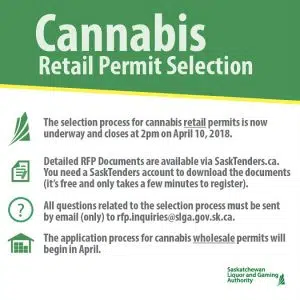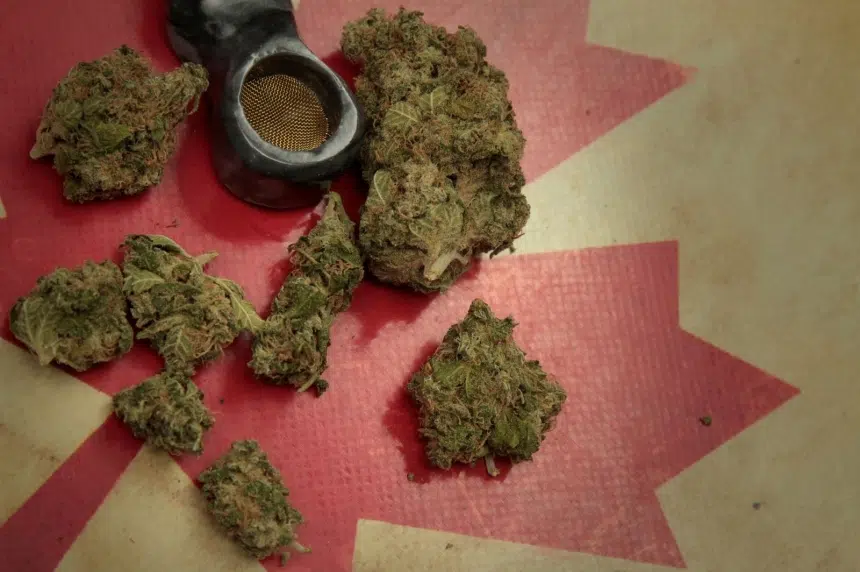Green is the colour — controlling legal cannabis is the game.
The provincial government announced Wednesday the minimum legal age for consuming non-medicinal marijuana will be 19 years old in Saskatchewan, the same age set for alcohol.
The age is one year older than the federal minimum of 18, which is also the age chosen by neighbouring provinces Alberta and Manitoba.
While Saskatchewan was the last province to release its pot policy, the province’s framework took into account 26,199 complete responses to an online cannabis legalization survey.
The province hasn’t set the price per gram for cannabis in Saskatchewan. Additionally, neither revenue nor expenses regarding the legalization will be reflected in the upcoming provincial budget.
Ottawa has promised to legalize cannabis for non-medicinal use later this year. Parts of Saskatchewan’s framework mirror recommendations from the federal government.

The responsibilities of Ottawa and provinces in regards to legalized non-medicinal cannabis.(Government of Saskatchewan)
Similar to cigarettes, people in Saskatchewan will not be allowed to consume marijuana in public spaces, schools or daycares.
Being high at work would already violate existing Occupational Health and Safety rules regarding impairment on the job.
The province will adopt minimum federal standards on home production, including a limit of four plants per household.
Saskatchewan will also adopt Ottawa’s proposed formula on taxation, whereby 75 per cent of the excise tax on non-medicinal sales goes to provinces and territories.
Drug-impaired enforcement
The province will remain firm on a zero tolerance for all drug-impaired drivers. It will always be illegal in Saskatchewan to drive while impaired, whether by drugs or alcohol.
The province said police are able to detect drug impairment through driver actions such as weaving within a lane, delayed reaction times and inability to follow instructions. Cannabis can also be detected by odour and the driver’s physical appearance – including dilated pupils, poor balance and co-ordination.
In Saskatchewan, police can request a standard field sobriety test or a saliva test on reasonable grounds of suspicion.
Possession limits
The maximum amount of cannabis a legal-aged person will be allowed to possess in public will be 30 grams.
The provincial government has committed to legislation forbidding minors from possessing any amount of cannabis.
Minors caught with small amounts of cannabis will be ticketed and have the product seized by police. Possession of more than five grams will be a criminal offence subject to the Youth Criminal Justice Act.
Non-medicinal cannabis retail
A two-stage Request for Proposal (RFP) process is now underway in Saskatchewan for cannabis retail stores.
There are 51 retail cannabis permits available across 32 Saskatchewan communities.
Interested parties who complete the first phase of screening for financial capacity and proposed inventory and sales reporting will move on to a random draw — or lottery.
 Proposals under the RFP have to be submitted by 2 p.m. on April 10.
Proposals under the RFP have to be submitted by 2 p.m. on April 10.
Once selected, proponents will have 45 days to begin the actual permitting process.
The number of retail licences will be restricted for the first three years of legalization. The province will also continue work regarding cannabis legalization in First Nations communities.
The Saskatchewan Liquor and Gaming Authority (SLGA) will employ a number of tools meant to protect public health and safety, including:
- Cannabis tracking and reporting: Ottawa is developing a cannabis tracking system to ensure product is legal and being shipped appropriately. The SLGA may consider additional measures if necessary.
- Mandatory training for staff: All owners, managers and employees in nonmedicinal cannabis stores will have to go through a training program developed for the industry.
- Proof of age for online sales: Cannabis retailers will be required to demand proof of age from all instore buyers. All online sales will require proof of age – and proof of purchase – upon delivery.
- Municipalities: Will have broad authority to zone and handle business-related issues through bylaws.











